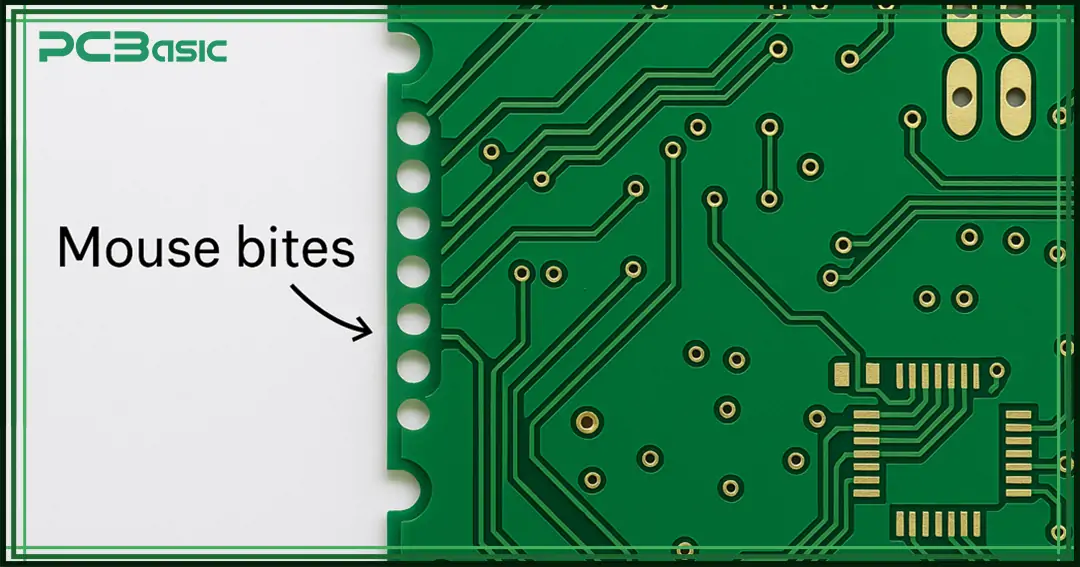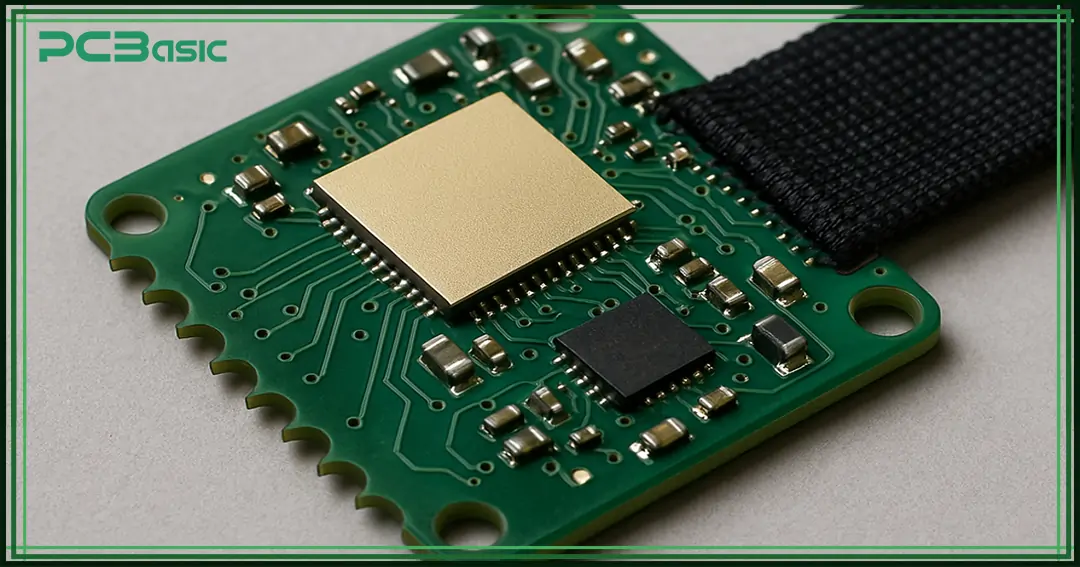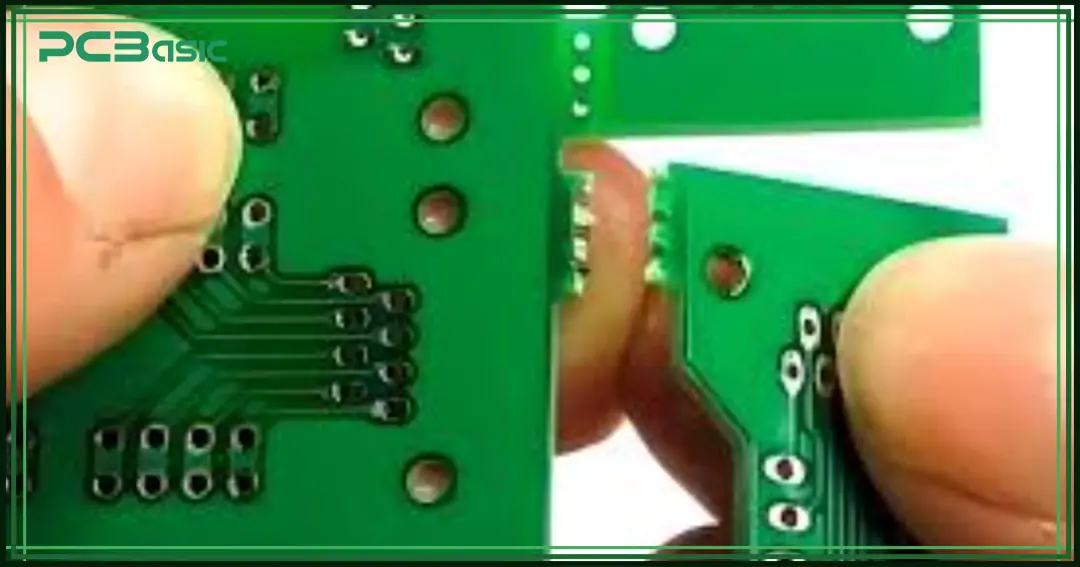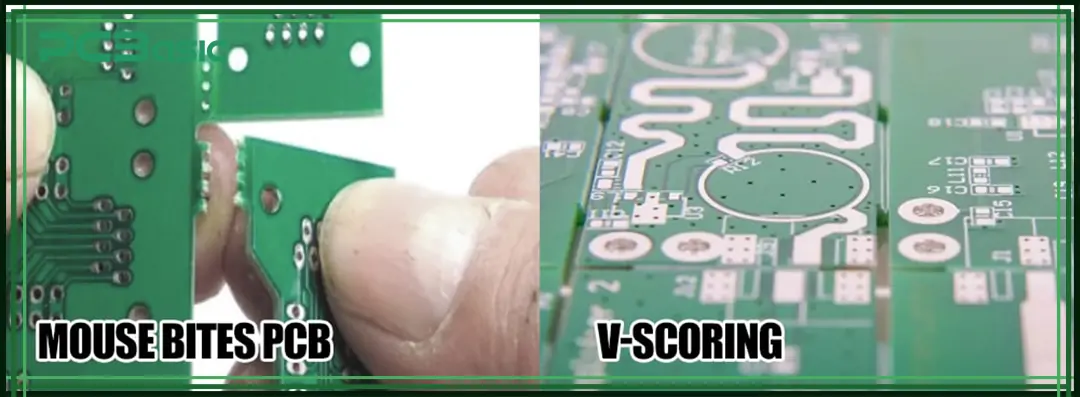Global high-mix volume high-speed Shenzhen PCBA manufacturer

Ru
9:00 -18:00, Mon. - Fri. (GMT+8)
9:00 -12:00, Sat. (GMT+8)
(Except Chinese public holidays)





Global high-mix volume high-speed Shenzhen PCBA manufacturer

Ru
9:00 -18:00, Mon. - Fri. (GMT+8)
9:00 -12:00, Sat. (GMT+8)
(Except Chinese public holidays)





HomePage > Blog > Knowledge Base > What Are Mouse Bites in PCBs?
The Printed Circuit Board manufacturing industry is known for its efficiency and accuracy. There are many design parameters that contribute to the accuracy and efficiency of PCB designs, and one such parameter is mouse bites in PCBs.
With the addition of mouse bites in your design, you can increase efficiency and reduce the manufacturing cost. In situations where the PCB size is small, multiple PCBs are manufactured in a single sheet by using the mouse bites in the PCB. After manufacturing, the individual PCBs are separated from each other, resulting in reduced cost and enhanced efficiency.
This article introduces you to the PCB mouse bites method, its purpose and advantages, and how mouse bites can reduce manufacturing costs in high-volume PCB fabrication.

PCB Mouse bites, as the name suggests, look like the mouse bites on the edges of PCB that are used to integrate multiple PCBs on a single sheet. These mouse bites are introduced in the PCBs to separate the individual PCBs from the larger panel after the manufacturing process.
By applying pressure on the edges of the PCB that has mouse bites, the individual PCBs easily separate from each other. After the separation, the tiny holes look like the PCB has mouse bites, hence the name mouse bites. In large-scale industries, where thousands of PCBs need to be manufactured simultaneously, this technique reduces their manufacturing cost, time, and time to market.

The purpose of mouse bites on your PCB design is solely subject to the needs of the industry. In the large-scale and high-volume fabrication industry, mouse bites can help reduce time, cost, and time to market. For some other industries, mouse bites can also be used for temporary structural support or improving manufacturing efficiency.
1. Panelization & Depanelization
In large-scale industries, thousands of PCBs need to be manufactured simultaneously, and the prime focus is to reduce time, cost, and time to market. That’s where the mouse bite technique comes into play; a batch of small PCBs is combined in a single sheet using the mouse bites. After the fabrication process, the PCBs are depanelized easily.
2. Support Irregular Shapes:
V scoring is another method that is used to separate individual PCBs from a panel. The disadvantage of V scoring is that it does not support irregular shapes like curved or angled shapes. The mouse bite method, on the other hand, allows support for irregular shapes, e.g., curved or angled shapes.
In most applications, complex shapes are required, such as
medical, wearable, and consumer electronics.
3. Cost Effectiveness:
Cost is one of the crucial parameters of any electronic product that gives the product a market-competitive edge. High volume fabrication industries always focus on reducing the product cost, and PCB mouse bites provide a cost-effective solution. Industries like wearable electronics and consumer electronics have small-sized PCBs that allow them to use PCB mouse bite technology to reduce their manufacturing cost, resulting in overall product costs.
Other techniques, like mechanical cutting, are expensive due to the use of extra equipment. On the other hand, mouse bites PCB uses the drill machines that are already being used for making other through holes in PCB.

Mouse bites in PCBs are particularly used in high-volume manufacturing due to their ability to separate individual PCBs from a panel. The following are some of the advantages of using PCB mouse bites.
1. In high-volume and small-size PCB manufacturing, thousands of small PCBs are manufactured together in a single sheet. The mouse bites allow clean separation of individual PCBs by applying pressure along the mouse bite area.
2. Unlike the V-scoring method, mouse bites have less mechanical stress on the PCB board. It greatly reduces the risk of cracks in PCBs.
3. Unlike V scoring or the mechanical cutting method, the mouse bite PCBs allow greater design flexibility because mouse bites are suitable for irregular shapes.
Accurately designing a mouse bite on PCB involves several parameters to consider. For a good mouse bite, it is recommended to drill a hole between 0.4mm to 0.8mm in size. Individual holes should be separated from each other by at least 0.3mm to 0.5mm. Each tab should not exceed 7 holes. Apart from mouse bite size, it is also important not to place any component near to mouse bite location. This is important to prevent any component or PCB failure. Moreover, make sure that the length of the mouse bite tabs allows smooth separation without damaging the side components.
|
Mouse bite hole size |
Hole spacing |
Tab configuration |
|
0.4 mm – 0.8 mm |
0.3 mm – 0.5 mm |
Up to 7 holes |
Some tips that must be considered for efficient and accurate results from the mouse bite PCB are:
1. Do not place mouse bites near components to prevent PCB or component damage.
2. Always use an appropriate number of tabs for mouse bites. Do not use very few or too many.
3. It is always a good idea to manufacture your prototype mouse bite PCB before going for high-volume manufacturing.
4. Always use tabs evenly across the edges of the panel.
Both mouse bites and V-scoring have their unique difference that must be known before choosing any of them for your PCB design. Some of the differences are shown below.

|
Feature |
Mouse Bites |
V-Scoring |
|
Mechanical Stress |
Low |
High |
|
Extra Tools Needed |
No |
Yes |
|
Depanelization Speed |
Slower |
Faster |
|
Design Flexibility |
High (supports irregular shapes) |
Low (supports straight lines) |
|
Shape Compatibility |
Curved and circular supported |
Only straight-line boards |
To sum up, a mouse bite is a crucial tool for separating an individual PCB from a large PCB sheet. Mouse bites are helpful in many scenarios because they can be placed in irregular shapes like curved, circular, etc. Mouse bite PCBs are common in the medical, wearable, and consumer electronics industries, where irregular-shaped PCBs are common. Mouse bites in PCB offer several advantages, including time saving, cost saving, and reducing manufacturing cost. Moreover, mouse bites impose less mechanical strain on the PCB compared to V-scoring methods.

Assembly Enquiry
Instant Quote